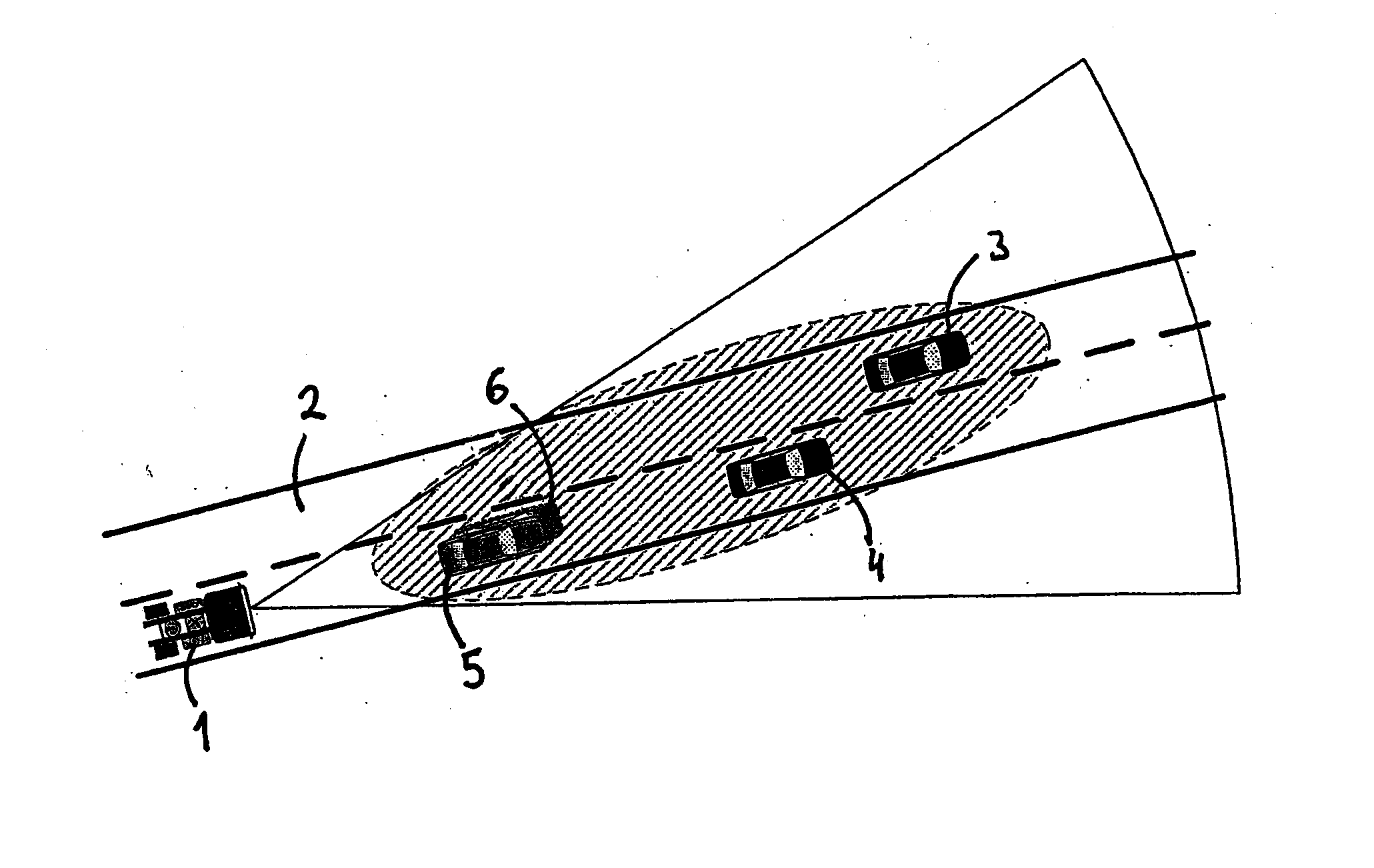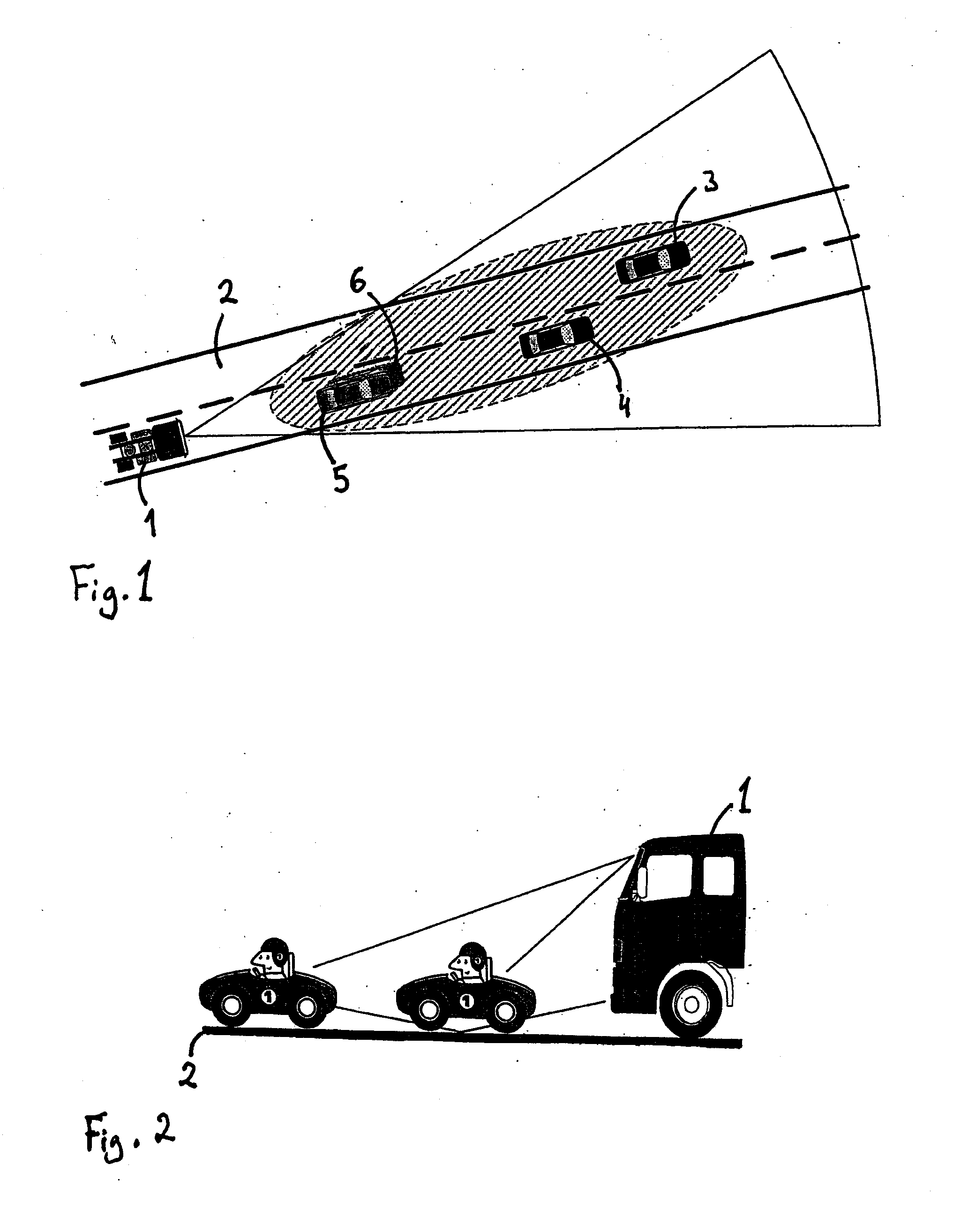Adaptative cruise control
a cruise control and adaptive technology, applied in the direction of automatic control systems, instruments, and reradiation, can solve the problems of not being able to detect and track extremely dirty (non-reflective) vehicles well in adverse weather conditions, not being able to track extremely dirty vehicles very well, and affecting the performance of vehicles, so as to reduce the burden of steering inpu
- Summary
- Abstract
- Description
- Claims
- Application Information
AI Technical Summary
Benefits of technology
Problems solved by technology
Method used
Image
Examples
Embodiment Construction
[0030]The system and method according to an aspect the invention will be explained with reference made to the enclosed figures. The examples are chosen in order to facilitate the reading and understanding of the system and method according to the present invention.
[0031]FIG. 1 is an overview of an example situation where a vehicle 1 equipped with an adaptive cruise control system is travelling on a road 2 with two lanes for traffic in the same direction. Also shown in the figure are three other vehicles, a first vehicle 3, a second vehicle 4 and a third vehicle 5. Partly overlapping and just slightly to the left and forward of the third vehicle 5 is a virtual target vehicle 6. The three vehicles 3, 4, 5 are treated as a group in the adaptive cruise control algorithm. In prior art algorithms a lead vehicle is chosen, generally the closest one, i.e. the third vehicle 5 in FIG. 1, regardless of whether a group of vehicles in front of the equipped vehicle is monitored or just the closes...
PUM
 Login to View More
Login to View More Abstract
Description
Claims
Application Information
 Login to View More
Login to View More - R&D
- Intellectual Property
- Life Sciences
- Materials
- Tech Scout
- Unparalleled Data Quality
- Higher Quality Content
- 60% Fewer Hallucinations
Browse by: Latest US Patents, China's latest patents, Technical Efficacy Thesaurus, Application Domain, Technology Topic, Popular Technical Reports.
© 2025 PatSnap. All rights reserved.Legal|Privacy policy|Modern Slavery Act Transparency Statement|Sitemap|About US| Contact US: help@patsnap.com


